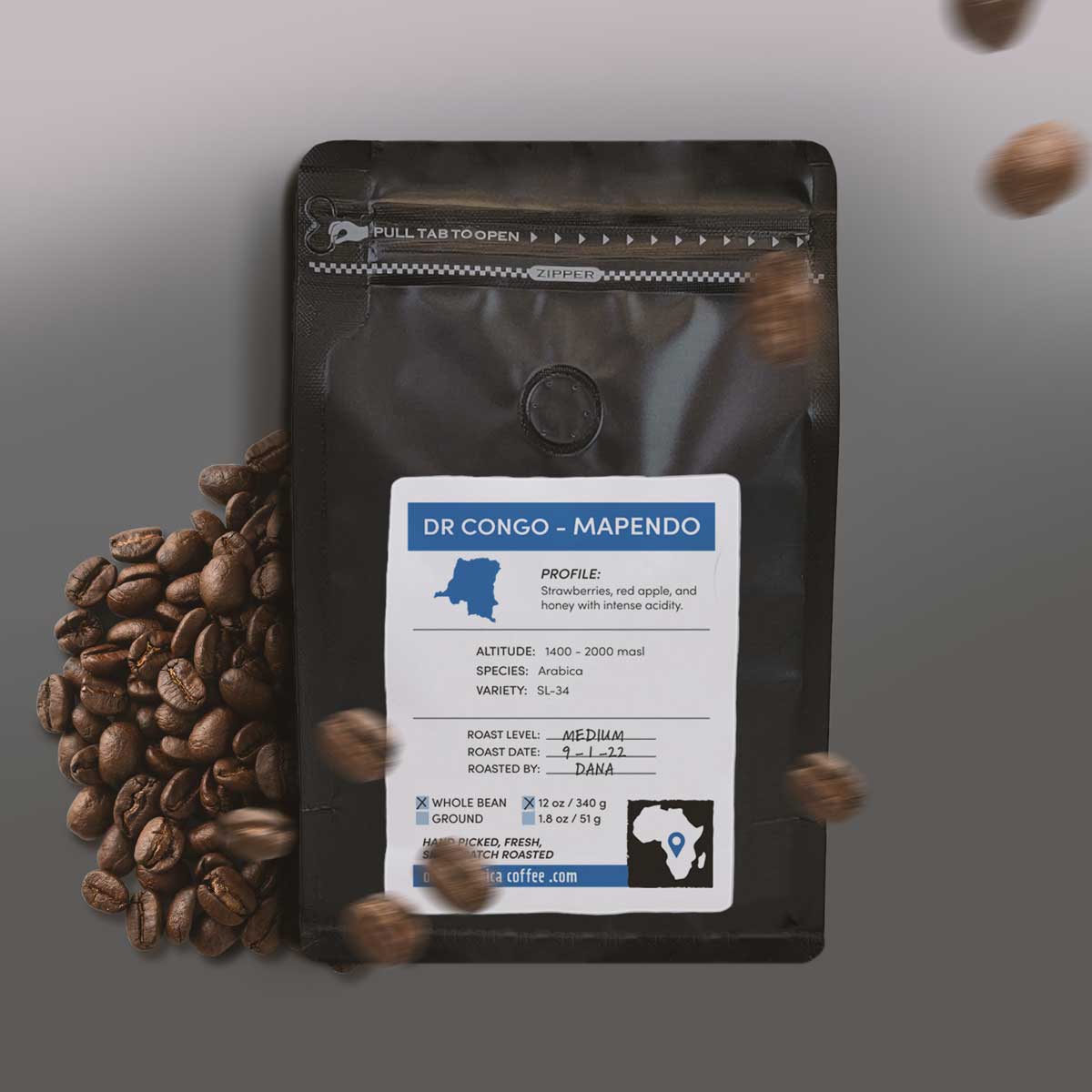Out of Africa Coffee
DR Congo Organic - Mapendo Washed - 12oz
Couldn't load pickup availability



Fikiri Charlotte’s life has improved since she started growing coffee––her revenue has allowed her to purchase a goat, build her own house, and buy additional acres to grow more coffee trees. One such coffee she grows is our DR Congo Organic Mapendo––its namesake meaning “love” in Swahili (KiSwahili), the Bantu language that’s spoken in the Democratic Republic of the Congo. This washed bean is farmed in 16 lots by over 4,000 farmers, with nearly half the farmers being women.
Being Fair Trade Organic certified since 2009 has helped the farm cultivate nutrient-rich soil and other resources that allow their coffee to thrive. Despite over 30 years of conflict in the Congo and the subsequent limit on coffee exports, Fikiri’s business rose above and now experiences a new time of peace.
Cupping Notes: Strawberries, red apple, and honey with intense acidity.
• Growing Altitude: 1,480-2,000 meters above sea level
• Variety: SL-34
• Process: Washed
• Region: African Great Lakes
The coffee industry was nationalized in the 1970s, and during the 80s, coffee remained one of the country’s top exports. The 1990s and 2000s saw a sharp dip in the Congo’s production. Political turmoil caused output to shrink to under 10% of the booming era just twenty years earlier. Luckily, an initiative that started in 2012 has put Congolese coffee on the path to recovery in the troubled country.
Today, it’s hard to know the exact amount of coffee the Democratic Republic of Congo produces. Smuggling large quantities into neighboring countries is a common occurrence. Once there, the coffee is not sold as a product of the DRC.
Due to the inconsistency in availability, it’s hard to get your cup full of coffee from the Congo. Roasters that can secure an order often experience delivery delays. Despite that, the increasing involvement of the private sector in the Congolese coffee industry offers hope that there will be greater consistency in the future.
Following WWI, the British took control of the region and the estate model was firmly
established for coffee. During the transition years from British “protection” to
independence, coffee farming cooperative began to emerge and would eventually
dominate coffee production after formal independence in 1961.
Today, 95% of coffee farmers are smallholders, growing coffee on less than 5 acres of land.





